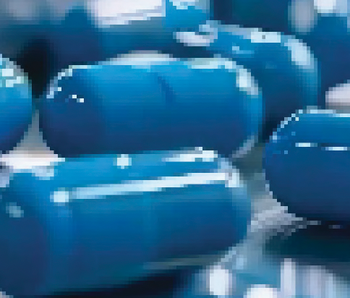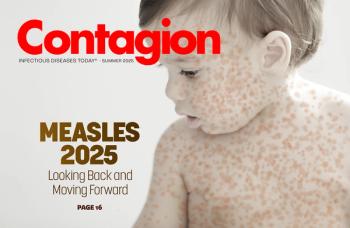
- April 2019
- Volume 4
- Issue 2
Polyspecific Intravenous Immunoglobulin Plus Clindamycin for Streptococcal Toxic Shock Syndrome

Are there advantageous effects to use of adjunctive IVIG in the treatment of STSS with clindamycin?
Streptococcal toxic shock syndrome (STSS) is a life-threatening disease caused by β-hemolytic streptococci, with group A Streptococcus being the most common pathogen.1 Mortality rates vary but are estimated to be between 30% and 60%.2-4 For STSS skin infections, the Infectious Diseases Society of America (IDSA) recommends combination therapy of penicillin and clindamycin5 along with surgical intervention.
Clindamycin is recommended because of its ability to suppress streptococcal toxin and cytokine production. Additionally, clindamycin has demonstrated efficacy in animal models6 and observational studies.7,8 Penicillin is also recommended because of potential resistance of group A Streptococcus to clindamycin. Although macrolide resistance is low in the United States, other countries have seen increased resistance rates to macrolides. Macrolides and clindamycin are not chemically related, but they share a similar mechanism of action, and many of these macrolide-resistant strains are also resistant to clindamycin.
Intravenous immunoglobulin (IVIG) has been suggested as adjunctive therapy to neutralize antibodies produced in response to streptococcal virulence factors9 and to inhibit the production of proinflammatory cytokines.10 However, controversy exists regarding the use of IVIG as adjunctive therapy, as IDSA guidelines do not recommend its routine use5 because of conflicting mortality benefit results and inconsistent use of clindamycin in the studies. Further, the lone prospective study of IVIG in STSS was terminated early because of slow enrollment.
A recent review and meta-analysis evaluated the mortality rate in studies evaluating adjunctive IVIG for patients treated with clindamycin for STSS.11 Previous studies had been complicated by the inherent risk of bias, the variable inclusion criteria, and the inconsistent use of clindamycin. Therefore, to combat bias, the authors used a Cochrane collaboration risk assessment tool.12 A meta-analysis was performed using a random-effects model and assessed heterogeneity using the Ι2 statistic, with the primary measure being the risk ratio (RR) for death at 30 days.
Five studies (1 randomized and 4 nonrandomized) met inclusion criteria from 1992 to 2009. One study was in children only, 1 study included children and adults, and the other 3 studies were in adults only. The primary outcome in each study was mortality at either 28 or 30 days. One hundred and sixty-five patients with STSS treated with clindamycin were included; among these, 70 patients also received IVIG. The overall mortality rate was 26.1%, ranging from 14.3% to 40.5% in individual studies. In the individual studies, IVIG administration was associated with lower mortality rates but was not statistically significant. However, in the pooled analysis, adjunctive IVIG administration in combination with clindamycin therapy was associated with a reduction in mortality from 33.7% to 15.7% (RR, 0.46; 95% CI, 0.26-0.83; P = .01), with negligible heterogeneity (I2 = 0%).
Although this was a meta-analysis, a limitation of the study still includes the small sample size, which may lack exact precision. Another limitation is that differences in baseline characteristics between groups may lead to confounding, with the authors acknowledging that the reduction in mortality rates associated with IVIG use could be due to confounding. A third limitation is that there was limited information on concomitant antibiotics, optimal dosing of IVIG, and length of therapy.
Without a large randomized, controlled trial, this study provides valuable insight and suggests advantageous effects of adjunctive IVIG in the treatment of STSS with clindamycin. Additionally, given that the condition is relatively rare and the previous valiant effort to enroll in a randomized, controlled trial proved futile, an international STSS registry, similar to the data collected by the ARDS Network, may help to provide more data and strengthen the recommendations (Table).
Zimmer is a clinical pharmacist/Antimicrobial Stewardship Coordinator at Northeast Regional Medical Center in Kirksville, Missouri. He is also an adjunct Professor in Pharmacology at ATSU-Kirksville College of Osteopathic Medicine. Drew enjoys fly-fishing, hunting, the St. Louis Cardinals and all things ID. You can find him on Twitter @zimrx17.* Zimmer is a member of the Society of Infectious Disease Pharmacists
References:
1. Stevens DL. Streptococcal toxic-shock syndrome: spectrum of disease, pathogenesis, and new concepts in treatment. Emerg Infect Dis. 1995;1(3):69-78. doi: 10.3201/eid0103.950301.
2. Lamagni TL, Neal S, Keshishian C, et al. Predictors of death after severe Streptococcus pyogenes infection. Emerg Infect Dis. 2009;15(8):1304-1307. doi: 10.3201/eid1508.090264.
3. O’Loughlin RE, Roberson A, Cieslak PR, et al; Active Bacterial Core Surveillance Team. The epidemiology of invasive group A streptococcal infection and potential vaccine implications: United States, 2000-2004. Clin Infect Dis. 2007;45(7):853-862. doi: 10.1086/521264.
4. Hasegawa T, Hashikawa SN, Nakamura T, Torii K, Ohta M. Factors determining prognosis in streptococcal toxic shock-like syndrome: results of a nationwide investigation in Japan. Microbes Infect. 2004;6(12):1073-1077. doi: 10.1016/j.micinf.2004.06.001.
5. Stevens DL, Bisno AL, Chambers HF, et al. Practice guidelines for the diagnosis and management of skin and soft tissue infections: 2014 update by the Infectious Diseases Society of America. Clin Infect Dis. 2014;59(2):147-159. doi: 10.1093/cid/ciu296.
6. Andreoni F, Zurcher C, Tarnutzer A, et al. Clindamycin affects group A Streptococcus virulence factors and improves clinical outcome. J Infect Dis. 2017;215(2):269-277. doi: 10.1093/infdis/jiw229.
7. Mulla ZD, Leaverton PE, Wiersma ST. Invasive group A streptococcal infections in Florida [erratum in
South Med J. 2003;96(11):1164]. South Med J. 2003;96(10):968-973. doi: 10.1097/01.SMJ.0000051060.95210.9A.
8. Zimbelman J, Palmer A, Todd J. Improved outcome of clindamycin compared with beta-lactam antibiotic treatment for invasive Streptococcus pyogenes infection. Pediatr Infect Dis J. 1999;18(12):1096-1100.
9. Shah SS, Hall M, Srivastava R, et al. Intravenous immunoglobulin in children with streptococcal toxic shock syndrome. Clin Infect Dis. 2009;49(9):1369-1376. doi: 10.1086/606048.
10. Norby-Teglund A, Kaul R, Low DE, et al. Plasma from patients with severe invasive group A streptococcal infections treated with normal polyspecific IgG inhibits streptococcal superantigen-induced T cell proliferation and cytokine production. J Immunol. 1996;156(8):3057-3064.
11. Parks, T, Wilson C, Curtis N, et al. Polyspecific intravenous immunoglobulin in clindamycin-treated patients with streptococcal toxic shock syndrome: a systematic review and meta-analysis. Clin Infect Dis. 2018;67(9):1434-1436. doi: 10.1093/cid/ciy401.
12. Higgins, JPT. Table 8.5.a: The Cochrane Collaboration’s tool for assessing risk of bias. In: Higgins, JPT, Green, S, ed. Cochrane Handbook for Systematic Reviews of Interventions. Version 5.1.0. John Wiley & Sons; 2011. www.handbook-5-1.cochrane.org/chapter_8/table_8_5_a_the_cochrane_collaborations_tool_for_assessing.htm.
13. Kaul R, McGreer A, Norrby-Teglund A, et al; The Canadian Streptococcal Study Group. Intravenous immunoglobulin therapy for streptococcal toxic shock syndrome—a comparative observational study. Clin Infect Dis. 1999;28(4):800-807. doi: 10.1086/515199.
14. Adalat S, Dawson T, Hackett SJ, Clark JE; British Paediatric Surveillance Unit. Toxic shock syndrome surveillance in UK children. Arch Dis Child. 2014;99(12):1078-1082. doi: 10.1136/archdischild-2013-304741.
15. Carapetis JR, Jacoby P, Carville K, Ang SJ, Curtis N, Andrews R. Effectiveness of clindamycin and intravenous immunoglobulin, and risk of disease in contacts, in invasive group A streptococcal infections. Clin Infect Dis. 2014;59(3):358-365. doi: 10.1093/cid/ciu304.
16. Linner A, Darenberg J, Sjolin J, et al. Clinical efficacy of polyspecific intravenous immunoglobulin therapy in patients with streptococcal toxic shock syndrome: a comparative observational study. Clin Infect Dis. 2014;59(6):851-857. doi: 10.1093/cid/ciu449.
17. Darenberg J, Ihendyane N, Sjolin J, et al; StreptIg Study Group. Intravenous immunoglobulin G therapy in streptococcal toxic shock syndrome: a European randomized, double-blind, placebo-controlled trial. Clin Infect Dis. 2003;37(3):333-340. doi: 10.1086/376630.
Articles in this issue
over 6 years ago
HIV Infection in 2019: A Cure Is Not the Real Newsover 6 years ago
Are Two Antibiotics Better Than One?over 6 years ago
The Case for On-Demand PrEPover 6 years ago
Biktarvy: A Regimen of Choice for HIV Therapyover 6 years ago
PrEP Retention in Care—It Takes a VillageNewsletter
Stay ahead of emerging infectious disease threats with expert insights and breaking research. Subscribe now to get updates delivered straight to your inbox.































































































































































































































































































































